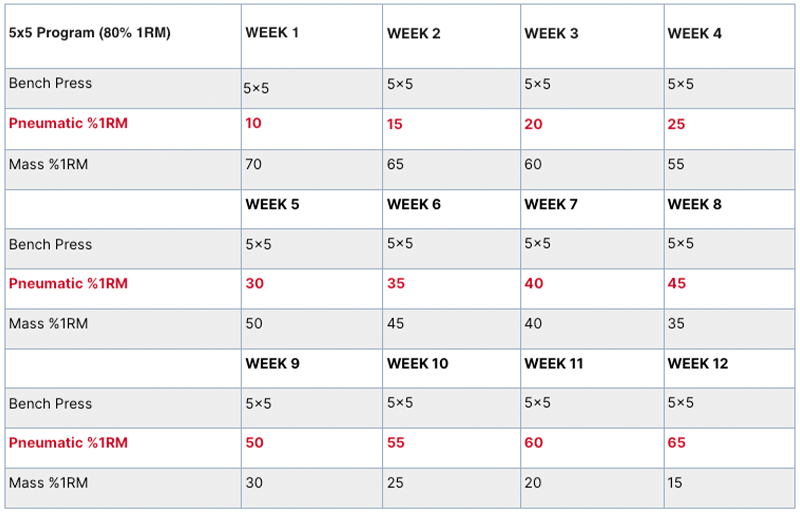3 min read
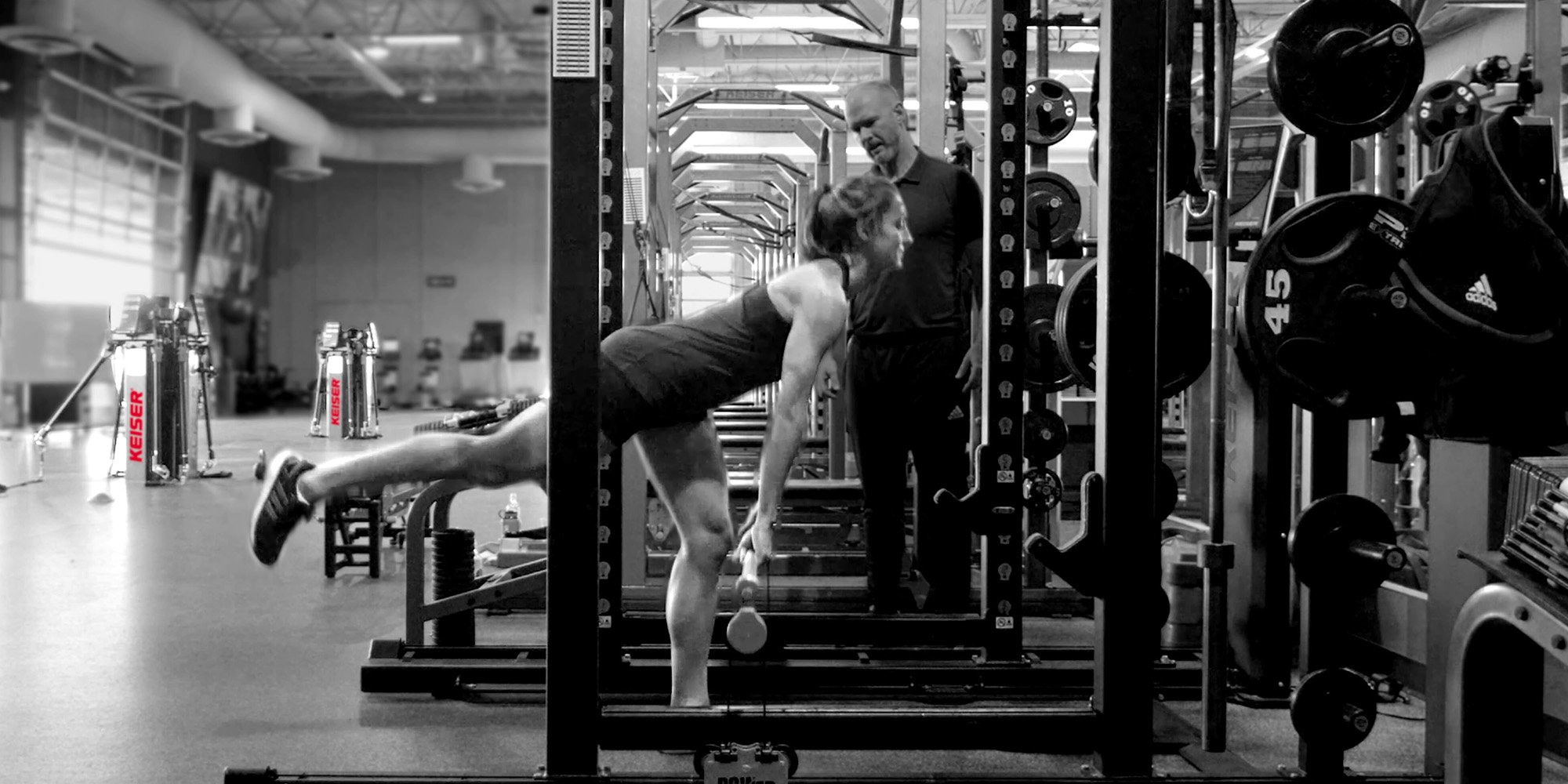
Unlocking Strength Training Potential with a Mixed Resistance Approach
In the dynamic world of strength training, understanding exercise intensity and the tools at your disposal is crucial for effective programming. The Keiser Rack offers a unique perspective with its Mixed Resistance approach, blending pneumatic and mass resistances. This article explores the science behind this innovative system, presents a real-world case study, and provides recommendations for optimizing training based on resistance ratios.
The Physics Behind Resistance
Traditional mass-based resistance programming relies on the weight lifted against gravity, where the force required is influenced by acceleration. Sir Isaac Newton's 2nd Law of Motion highlights that the mass's acceleration increases the force needed for a change in motion. This can best be illustrated by the pushing movement in the bench press. Most of your effort is needed at the beginning to get the bar moving. In physics terms, this is a process of overcoming inertia which is described in Newton’s 1st Law. Then, once the bar has started moving, less effort is required to keep it moving. This is due to another physics principle known as momentum, described in Newton’s 3rd Law.
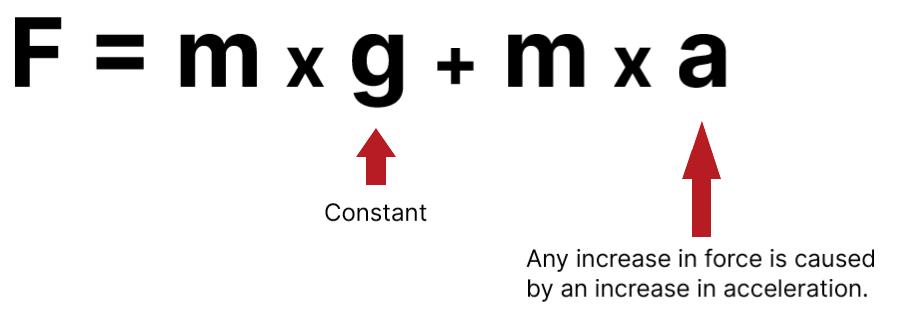
Keiser Pneumatic resistance, driven by air pressure, ensures a consistent resistance due to its lack of mass. With only the mass of the bar or attachment and a few mechanical components, Newton’s Laws do not govern the majority of the resistance. This means that one kilogram of resistance always feels like one kilogram, irrespective of acceleration. This allows for higher movement velocities and consequentially higher power outputs (Power = Force x Velocity).
Adaptation in the Lab
Multiple studies have been performed to examine the different adaptations that come from using different resistances. In his studies, Dr. David Frost showed that both types of resistances have their own advantages and using this knowledge was important to targeting specific adaptation qualities. He found that both mass and pneumatic training can be used to improve an individual’s 1RM (1-Rep Max). Mass-based training created improvements due to increases in force development at heavy resistances while pneumatic-based training showed increases in force development at light resistances. More importantly, pneumatic-based training displayed an increase in velocity and power at ALL resistance levels. The key takeaway from these studies is this – selecting the correct resistance types and programming to stimulate the desired adaptations is imperative for optimal performance.
Real-World Application
To understand the applications of mixed resistance training, consider a male client in their 30’s using the Keiser Rack for a Bench Press test. To eliminate variables, the test focused on concentric-only movements, similar to the Keiser A420 Leg Press load-velocity profile test. Testing both 100% pneumatic and 100% mass resistances yielded distinct 1RM values: 100 kg for pneumatic and 140 kg for mass.
.jpg?width=727&height=493&name=EM%20Mark%20-%20Rack%20(1).jpg)
With differing 1RM values, achieving a true 50/50 ratio requires considering the relative intensity from each resistance type. Using an Excel spreadsheet, we calculated relative 1RM values for ratios such as 25/75, 50/50, and 75/25 mixed resistance. The progression showed a gradual increase in total resistance, confirming the accuracy of estimated 1RM values through practical testing.
Understanding Ratios for Optimal Training
In strength training, movement velocity and acceleration play pivotal roles. Many programs have a goal of targeting one of the 5 Trainable Qualities which include Speed, Power, Strength, Hypertrophy, and Muscle Endurance. To elicit the desired training outcome, it is important to understand volume and intensity zones necessary for each quality. The illustration below shoes Keiser’s recommendations for targeting different aspects of the 5 Trainable Qualities.
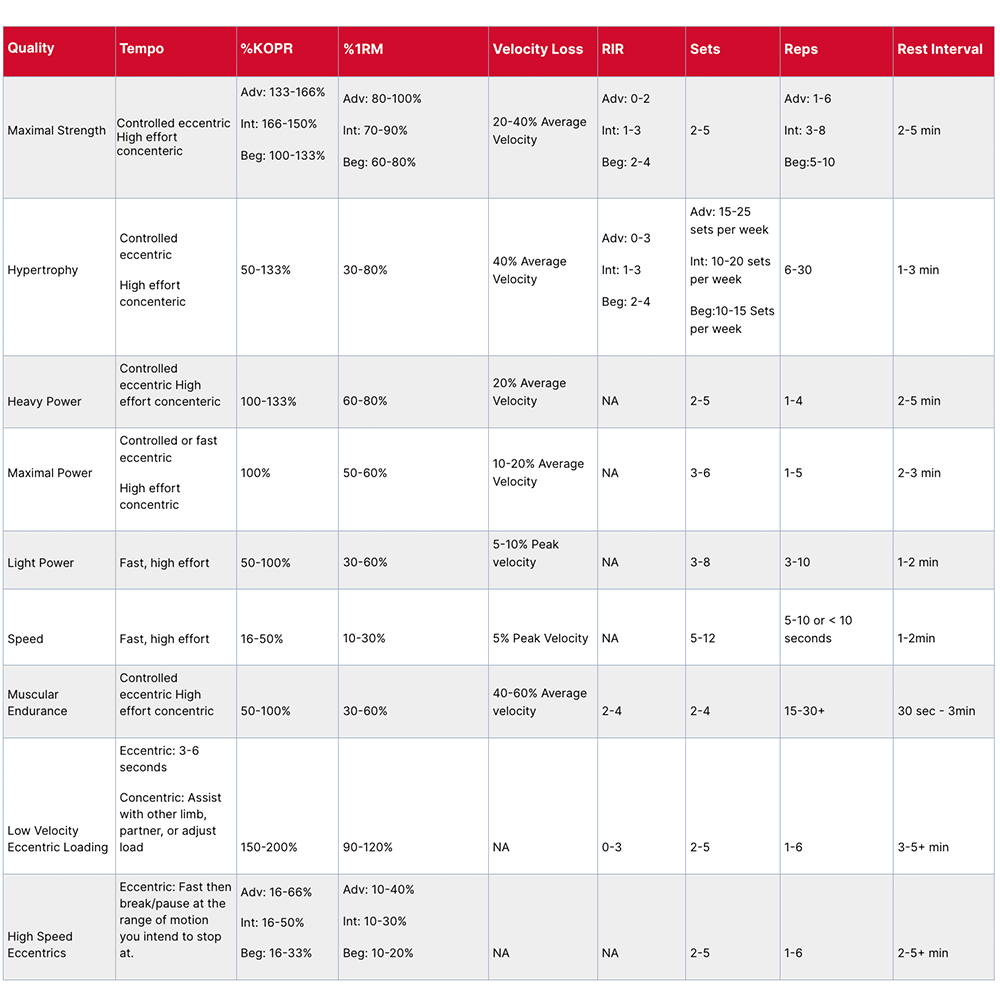
Load-Velocity Profiling can also provoke insight into the different training zones. Graphing the power curve can show you what level of resistance is needed to target Speed, Power, and Strength. The left side of the curve represents speed while the right side represents strength. In the middle, where speed and strength combine, is where you find the greatest power. 
Tailoring Training with Mixed Resistance Ratios
Remember that power is equal to the product of force and velocity. For this reason, power can be improved by increasing either of these metrics. Power can also be expressed as the amount of work done over a period of time. To target power development with a velocity bias, a higher ratio of pneumatics (e.g., 100% pneumatic or 75% pneumatic / 25% mass) is recommended. Conversely, for increased overall force generation, a higher mass ratio (e.g., 100% mass or 75% mass / 25% pneumatic) is advised. We suggest that a balanced 50/50 pneumatic-to-mass ratio might be the optimal sweet spot for achieving the best of both worlds.
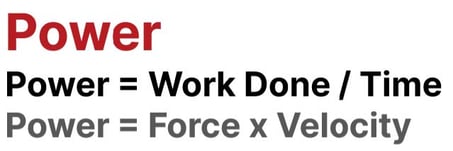
Additionally, manipulating mixed resistance ratios can help attack weaknesses or target specific aspects of power. Imagine a quick, lean golfer trying to improve their driving distance or a slow, strong lineman trying to improve speed and agility. The golfer would benefit from power development with a force bias, suggesting a need for a higher mass ratio. Conversely, the lineman would benefit from power development with an acceleration or velocity bias, suggesting a need for a higher pneumatic ratio.
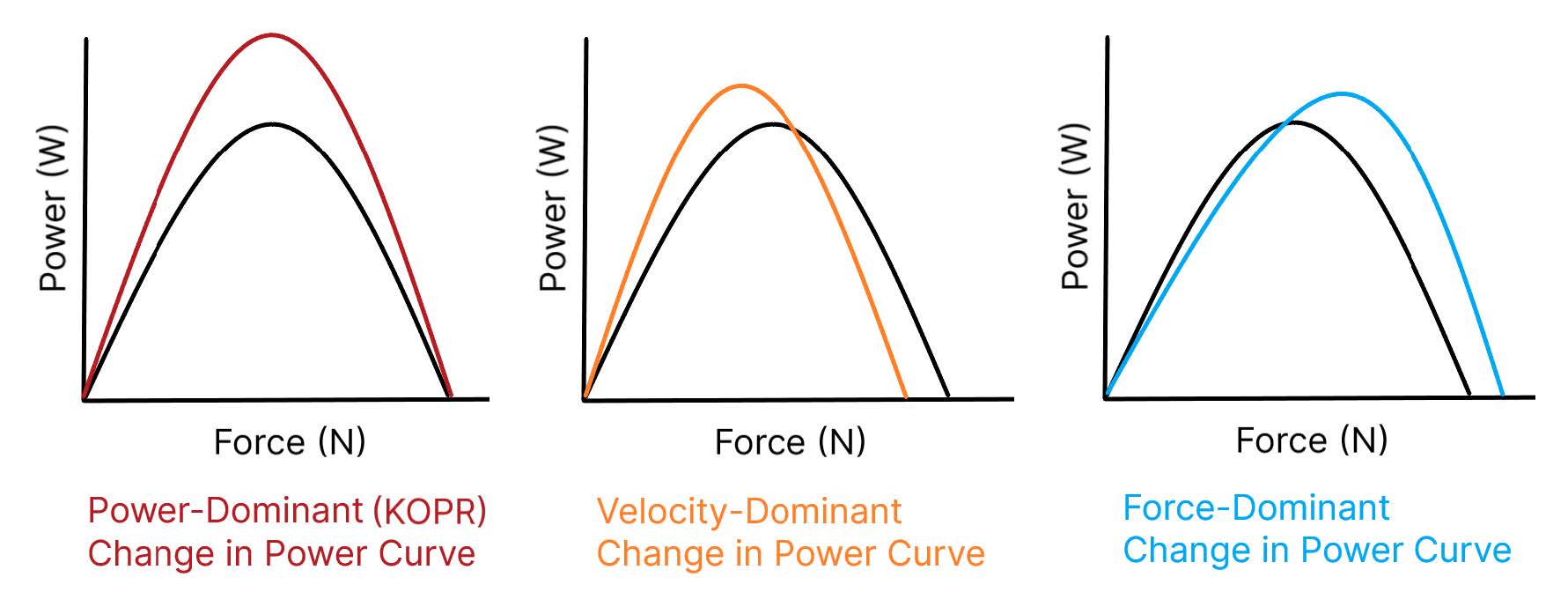
Here is an example of a workout that could benefit the golfer:
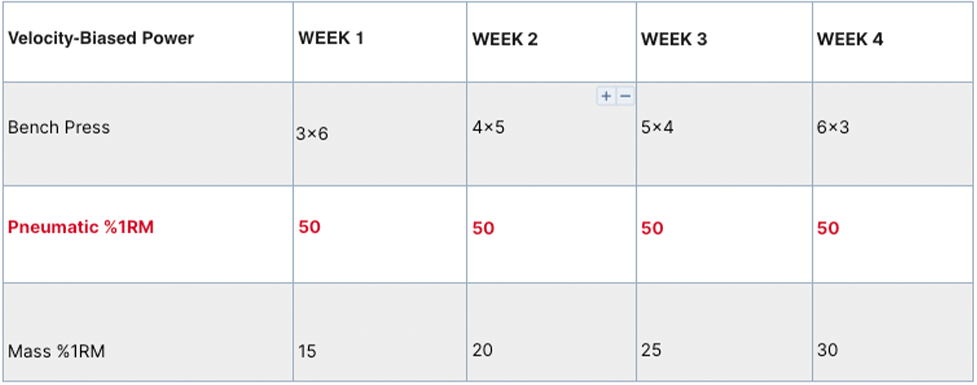
Here is an example of a workout that could benefit the lineman:
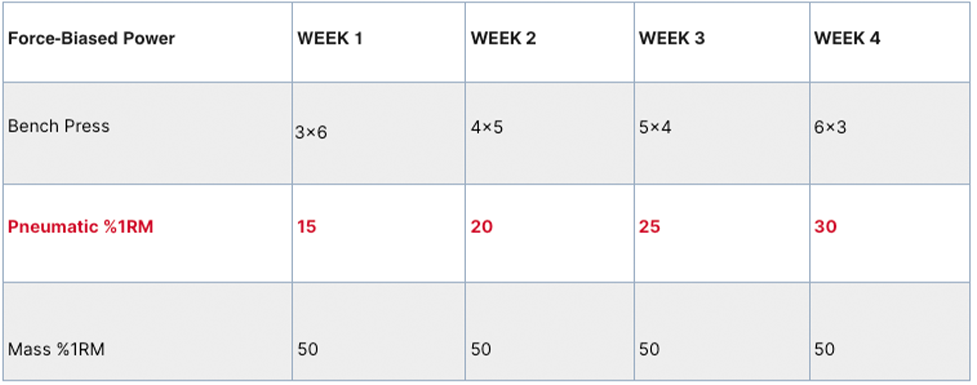
There are limitless training possibilities, due to the equipment, intensity, volume, and other variables that can be chosen. The final example of mixed resistance programming highlights the ability to progressively change stimuli while maintaining the same structure. Let’s say an individual really enjoys the 5 sets of 5 rep scheme. Normally, doing the same scheme for months would result in less adaptation as your body becomes acclimated and less stimulated. With mixed mass, you can continue stimulating adaptation for a longer period of time and target multiple qualities within the same set/rep scheme.
Another Tool in the Toolbox
The Keiser Rack Mixed Resistance approach offers a nuanced way to program exercise intensity, providing a versatile tool for individuals seeking a comprehensive strength training experience. By understanding the physics, conducting real-world testing, and strategically employing resistance ratios, users can unlock the full potential of their workouts and achieve a balanced and effective training regimen.
